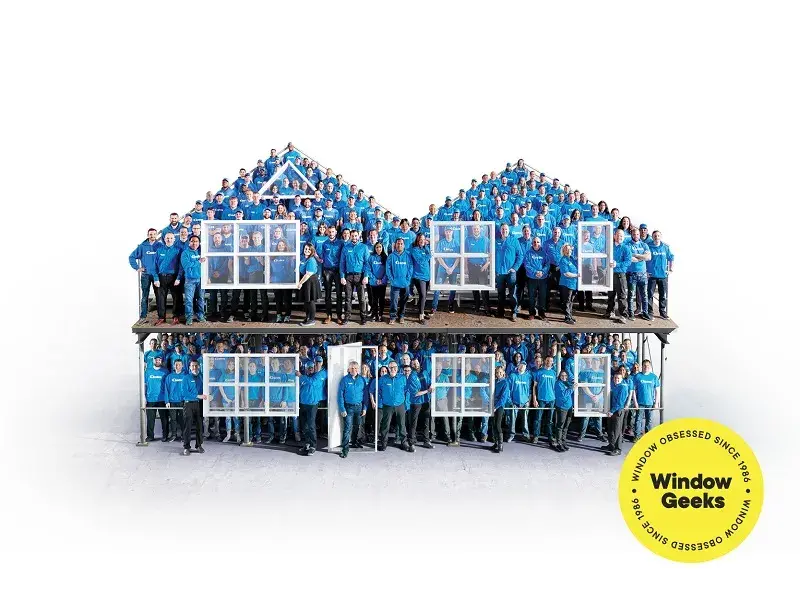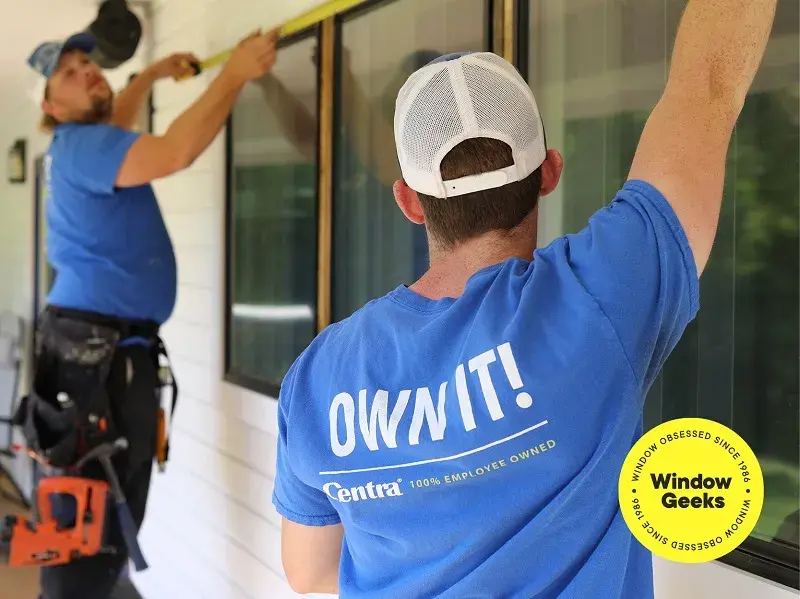Windows
How to Inspect Window Weatherstripping
Geek Level 1
Regular window inspections are essential for identifying potential issues before they become major problems. One key component that requires periodic checks is the window weatherstripping. In this helpful guide, Centra Install Pros will show you how to inspect your weatherstripping and what signs of damage to keep an eye out for to ensure your windows perform as intended.
Step-by-Step Instructions: How to Inspect Window Weatherstripping
Open or Remove the Window Sashes
To inspect your weatherstripping thoroughly, start by either removing the sashes or fully opening the window if it’s a crank system.
- Remove sashes: If your windows have removable sashes, as is typical with sliding windows, carefully lift them out of the frame to gain access to the weatherstripping.
- Fully open crank windows: If your windows have a crank system, open them fully to expose the weatherstripping around all surfaces.
Examine the Weatherstripping for Damage
Once you have access to the weatherstripping, carefully inspect it for any visible signs of damage.
- Rips or tears: Look for any rips, tears, or holes in the weatherstripping, as these can compromise the window's seal and allow air or moisture to enter.
- Missing sections: Check if there are any sections of weatherstripping that have fallen off or are completely missing, which could lead to drafts and energy loss.
- Worn-out or brittle material: Over time, weatherstripping can become brittle or worn out due to exposure to the elements. Feel the material to check its condition.
Pro Tip: Use a magnifying glass or flashlight to carefully inspect the weatherstripping for small cracks or signs of wear that may not be immediately visible to the naked eye. This can help you identify potential issues before they become bigger problems.
Inspect the Entire Window Surface
Inspect all surfaces around the window, including the frame, sashes, and corners, where weatherstripping may be applied.
- Corners and edges: Pay special attention to the corners and edges where the weatherstripping meets, as these areas are more likely to show signs of wear or damage.
- Compression: Ensure that the weatherstripping is properly compressed when the window is closed. This ensures a tight seal and prevents drafts.
Perform a Simple Air Leak Test
After visually inspecting the weatherstripping, perform a quick air leak test to check the window's seal.
- Paper test: Close the window on a piece of paper and pull it out. If it slides out easily, there may be degradation of the weatherstripping that need to be addressed.
- Light test: Shine a flashlight around the window frame at night and look for any gaps or light coming through, which could indicate a failed weather seal.
Why Regular Weatherstripping Inspections Are Important
Regularly inspecting your window weatherstripping is crucial for maintaining a comfortable and energy-efficient home. Here’s why:
- Prevent air leaks: Weatherstripping helps to create an airtight seal around your windows, preventing drafts and reducing the load on your heating and cooling systems.
- Increase energy efficiency: Well-maintained weatherstripping reduces energy loss and helps keep your home’s temperature stable, lowering energy bills.
- Prevent water damage: Damaged weatherstripping can allow water to seep through, causing moisture damage to the window frame and surrounding areas.
- Improve comfort: Proper weatherstripping prevents uncomfortable drafts and helps maintain consistent indoor temperatures year-round.
Common Weatherstripping Issues and How to Fix Them
Here are some common problems with weatherstripping and how to address them:
- Torn or damaged weatherstripping: If the weatherstripping is torn or damaged, it needs to be replaced immediately to maintain an airtight seal and maintain energy efficiency.
- Loose or missing sections: If sections of the weatherstripping are loose or missing, replace them with new material to ensure the window is sealed properly.
- Compression issues: If the weatherstripping is no longer compressing properly due to age or wear, it should be replaced with a new, high-quality weatherstripping material.
Pro Tips for Maintaining Window Weatherstripping
- Regular inspections: Inspect your weatherstripping at least once a year, or more frequently if you notice drafts, water leaks, or visible wear.
- Use high-quality materials: When replacing weatherstripping, opt for high-quality materials designed for your climate and window type.
- Clean before replacing: Make sure to clean the window frame and weatherstripping area before installing new weatherstripping to ensure a strong seal.
- Choose quality windows: Centra manufactures energy-efficient vinyl and hybrid windows crafted to the highest standards. Our custom-made products are tailored for your specific project and come with an unrivalled 30-year warranty. Designed with the end-user in mind, they are built to minimize maintenance needs.
FAQ: Inspecting Window Weatherstripping
How often should I inspect my window weatherstripping?
It’s recommended to inspect your window weatherstripping at least once a year or whenever you notice drafts or water damage around the window.
Can I replace weatherstripping myself?
Yes, weatherstripping replacement is a relatively simple DIY task. Just make sure to measure and cut the new material properly for a tight seal.
What type of weatherstripping should I use for my windows?
Choose weatherstripping designed for your specific window type and climate. High-quality foam, rubber, or silicone materials are ideal for most windows.
Centra: Western Canada’s Top Choice for Windows & Doors
Have an upcoming window and door project? Reach out to the experts for a free consultation! If you have any questions regarding this topic or anything else to do with windows, contact a local Centra Employee Owner at 1-888-534-3333 or drop us an email at info@centra.ca. Follow us on Facebook and Instagram to stay up to date, and test your window knowledge on LinkedIn.
Recommended for you

Geek Level 1
Windows
How to Remove and Clean Tracks on Slider Windows
Geek Level 1
Windows
How to Install or Replace a Window Screen Tab



